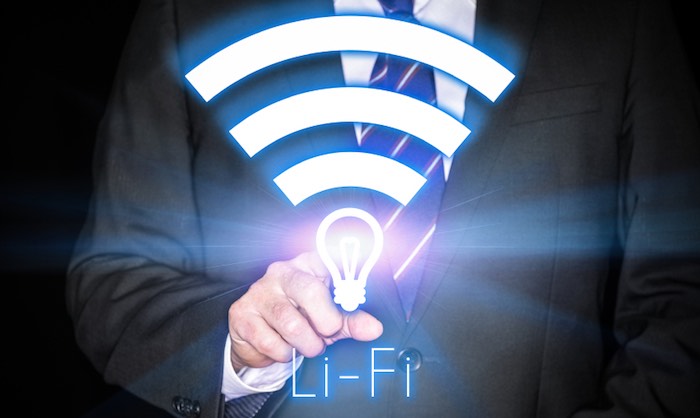Apple Experiments with New Technology Which Transmits Data at the Speed of Light

Toggle Dark Mode
Recent releases of iOS have been found to contain code that references Li-Fi, an experimental wireless connection protocol that uses light to transmit data.
The fact that Li-Fi related code can be found in iOS is certainly interesting, especially considering the fact that it’s still a highly experimental technology, which Apple doesn’t tend to incorporate into its products.

Li-Fi itself was first invented by Harold Hass back in 2011, and is similar to Wi-Fi in that its point is to transmit data, but uses LED lights to do so instead of radio waves. Using visible light communications, Li-Fi is able to switch the lights on and off at an extremely fast rate – faster than the human eye can see. This flickering is what transmits the data itself. What makes it even more interesting is that while LED lights are used to transmit data, those lights can be turned down so low that again, the human eye can’t see them.
Li-Fi has a number of major advantages, but also a number of major disadvantages. While it can be used through light bulbs in the home and hence can be incorporated without having to buy gear that someone wouldn’t already have, it also offers a much faster data transmission speed. In fact, researchers from the University of Oxford were able to transmit data at a whopping 224 gigabits per second. This is, of course, in a lab, and in the real world speeds will be slow, but the fact remains that the technology shows a lot of promise.
The technology is, however, unable to transmit data through walls, which is a good and a bad thing. It’s bad, of course, because it means you won’t be able to connect in your back yard, but its good because it means that your neighbors won’t be able to steal your internet connection any more. This also makes it more secure, as people won’t be able to access your network without your permission, for example in an apartment complex, and use that connection to hack into your computer.
Most researchers suggest that Li-Fi isn’t a replacement to Wi-Fi, but instead will be best used with Wi-Fi.
While Li-Fi might well be incorporated into Apple devices, as it might be incorporated into all devices, in the near future, it’s not yet known what Apple’s role in the adoption of the tech is, or if Apple is planning on making some major announcement that could bring Li-Fi into the public eye.

Despite this, researchers working on Li-Fi suggest that it’s not yet ready for the public, and it could take as long as three to four years before consumers are able to use LED lights to transmit data and connect to the internet.
While Apple could well be looking into Li-Fi as a way to connect future devices, it’s very unlikely that we’ll see any real Li-Fi connectivity in the iPhone 7 or the next generation of Apple devices in general.
If, however Li-Fi is incorporated into the iPhone 7, it won’t be the only major change to the iPhone. The company is reportedly looking into removing the headphone jack on the iPhone in order to increase the thinness of the device more than it already has. What this means is that the company will have to offer either Bluetooth headphones or Lightning headphones with the iPhone 7.
Of course, it’s also entirely possible that Apple could move beyond the Lightning connection and instead turn to USB-C as a way to charge and transmit data. This would make sense, especially considering the fact that USB-C is a lot faster than Lightning, both when it comes to data transmission and charging. In fact, many argue that Apple would be ignorant not to use USB-C, especially considering the fact that it only created the Lightning port because it thought it could offer a protocol that was faster and easier to use. That’s no longer true, unless it has another connector up its sleeve that it will unveil alongside the iPhone 7.
Rumors about the iPhone 7 have been building for months, yet we won’t actually see the device until Apple’s September event. One thing is for sure – it will be a big release.\
Learn More: iPhone 7 Rumor Round-Up: Here’s What We Expect from the Next iPhone
[The information provided in this article has NOT been confirmed by Apple and may be speculation. Provided details may not be factual. Take all rumors, tech or otherwise, with a grain of salt.]






